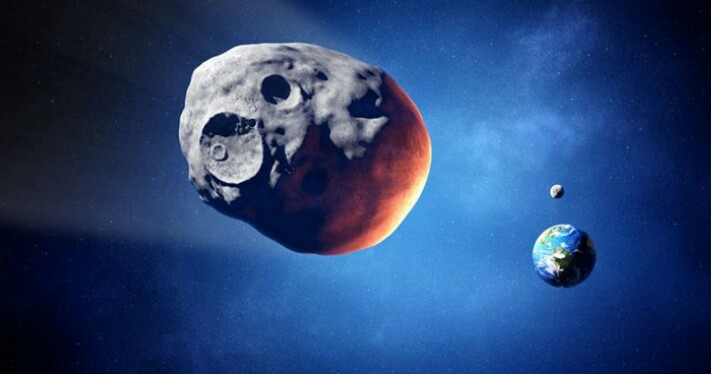A Bus-Sized Asteroid Is About To Swing Past Earth, Closer Than The Moon
A space rock will fly past Earth tomorrow and, while it won't hit us, it's really going to fly truly close.
The transport measured steroid 2018 DV1, named a close Earth space rock, will go around 105,000 kilometers (65,000 miles) from our planet at about twelve EDT tomorrow, March 2.
For examination, the Moon circles at 385,000 kilometers (240,000 miles), which means 2018 DV1 will come in excess of three times nearer. It will be the 6th nearest space rock to pass Earth in 2018, and the eighteenth to fly inside the circle of the Moon.
This space rock is in a circle around the Sun that takes around 358 Earth days. The farthest separation from the Sun it achieves, its aphelion, is 1.15 AU (1 AU, cosmic unit, is the Earth-Sun remove). Its nearest point, its perihelion, is 0.82 AU.
Glancing back at its past passes, we can see this is the nearest it has ever gone to our planet. Its past nearest approach was likewise March 2, route in 1906. In those days, it achieved a separation of 442,000 kilometers (275,000 miles).
Our forecasts for its circle up to 2067 (there's no accessible information past that) don't demonstrate it making any methodologies as close as the one tomorrow. Furthermore, luckily, there are no known space rocks on a crash course with Earth. Yahoo!
We've had many space rocks make close goes to Earth as of now this year, however. Back on February 4, we had 2002 AJ129, which flew past at a generally substantial separation of 4.2 million kilometers (2.6 million miles). Be that as it may, its size, tantamount to a high rise, drew some consideration. At that point on February 9, a space rock called 2018 CB flew past at a separation of 64,000 kilometers (39,000 miles).
Both of those were sufficiently close to win them the moniker of a "conceivably unsafe space rock" (PHA), in spite of the fact that don't stress excessively. NASA orders anything as a PHA that surpasses 500 feet (140 meters) in size and comes nearer than 7.5 million kilometers (4.6 million miles) to Earth.
So 2018 DV1 is yet another space shake traveling our route, however as regular there's nothing to stress over. In any case, in case you're intrigued, you'll have the capacity to watch it online at the Virtual Telescope Project. Furthermore, there's another space rock to anticipate on March 7, called 2017 VR12, which will pass 1.4 million kilometers (870,000 miles) from our planet.
Additionally, it may be worth reasoning about space rocks more truly sooner or later, on the off chance that we need to maintain a strategic distance from the destiny of the dinosaurs later on. Simply saying.
Image source: Google

Add source to image or else it will considered as plagiarism
Ok @saimegh ... Thankyou!! You are from chennai?
Nativre : Hyderabad but staying in Chennai.. are you from Chennai
I was about to submit your post to steemcleaners butstopped 😉 add source everytime
Ok ... I'm from Hyderabad .. uppal
Nice .... Dilshuknagar good to see Telugu girl